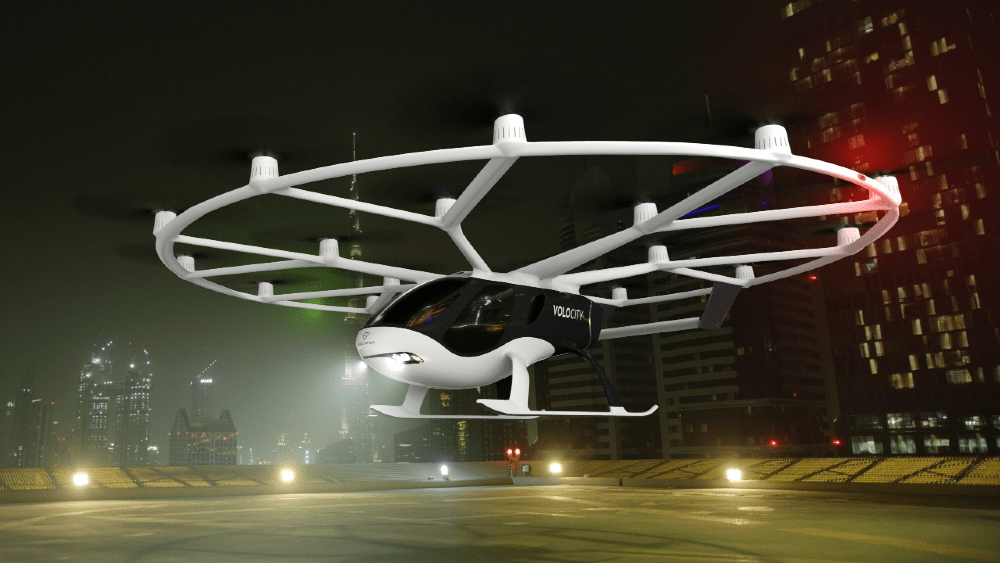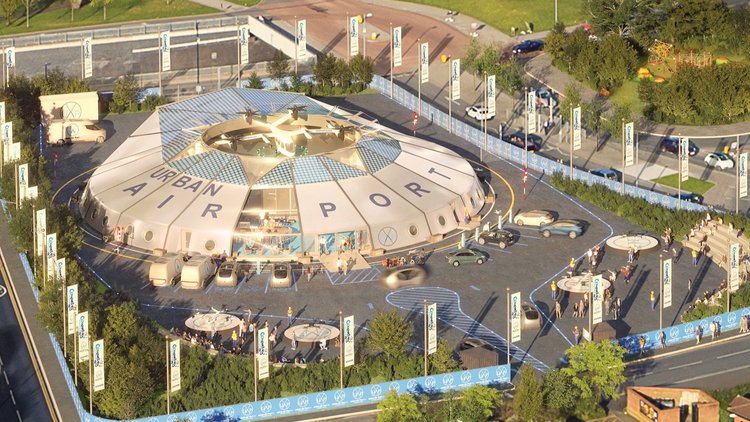
Welcome to the world of vertiports!
While eVTOLs, otherwise known as flying taxis, won’t make their first “commercial” passenger carrying flights until the Paris Olympics next year, the futuristic aircraft and the vertiports from which they operate are ideal for densely populated cities like Hong Kong, according to a dynamic UK-based architect, Andrea Wu, who’s now focusing on the emerging industry.
Delivering the keynote address at the thought provoking HKUID “New Urban Mobility” conference, the Urban-Air Port Ltd CEO explained there were significant advantages in taking the traditional sprawling airport model and “compacting and stacking it vertically”. This included less costly real estate, less noise and other environmental benefits resulting from smart technology, and increased safety due to a more controlled operating environment.

A former Foster + Partners associate, Wu helped design and create one of the world’s first vertiport models, Air One, (pictured below) in Coventry in April last year, leveraging both government and private funding. She says the inspiration behind Urban-Air Port was to integrate airports into the city, rather than build places where you simply fly from one city to another. It’s a message that resonating because the start-up has secured a client in the US and Japan and continues to attract global interest.

German manufacturer Volocopter will operate eVTOL (Electric Vertical Take-off and Landing) flights in Paris during the 2024 Olympic Games. eVTOLS, such as the Volocopter 2X model (shown above), typically fly at low altitudes on relatively short routes.
Could the concept work in Hong Kong?
Possibly, in time, says Ricky Leung, Executive Director, Engineering & Technology, Airport Authority Hong Kong. Leung agreed there were many positive aspects to the vertiport model. However, he noted the biggest challenge for Hong Kong International Airport (HKIA) was its already congested airspace, with 1200 flights a day. He cited a similar concern over a previous proposal for helicopter operations which would have impacted slots for regular flights. “Once this issue is resolved, we could explore the co-existence with eVTOLs,” he said.
HKIUD President Barry Wilson admits many urban thinkers remain sceptical about urban air systems. “But they will come,” he says. “It’s only a matter of time and how they integrate into the city.” He says the most forward-looking cities are already removing vehicles from the streets to improve safety, health and the utility of valuable land assets. “Options to utilise urban air space will become ever more pressing.”
The author of Futureproof City: Ten Immediate Paths to Urban Resilience notes that while drones are increasingly being used in goods rather than human carriage, scaling up to provide taxi services is more a matter of regulation than innovation. “Clearly the opportunity to integrate the Urban-Air Ports with other mass transit hubs utilising their large electric feed and charging may prove important in network efficiencies under carbon-zero policies,” he says.
During an address at the conference, Leung explained that HKIA was aggressively adopting smart mobility, with the use of autonomous tractors to haul cargo and passenger baggage and autonomous patrol cars. Autonomous buses were being trialled at speeds of up to 40 kmph, with a target of up to 100 buses operating within the massive Sky City airport precinct, now under development. The airport had developed its own 5G network and would open fully autonomous carparks over the next two years.
Leung also noted the $600 m renovation of Asia World Expo would deliver a 20,000-seat concert venue, to complement the new 50,000-seat stadium and 10,000-seat sports centre at Kai Tak, scheduled to open next year.